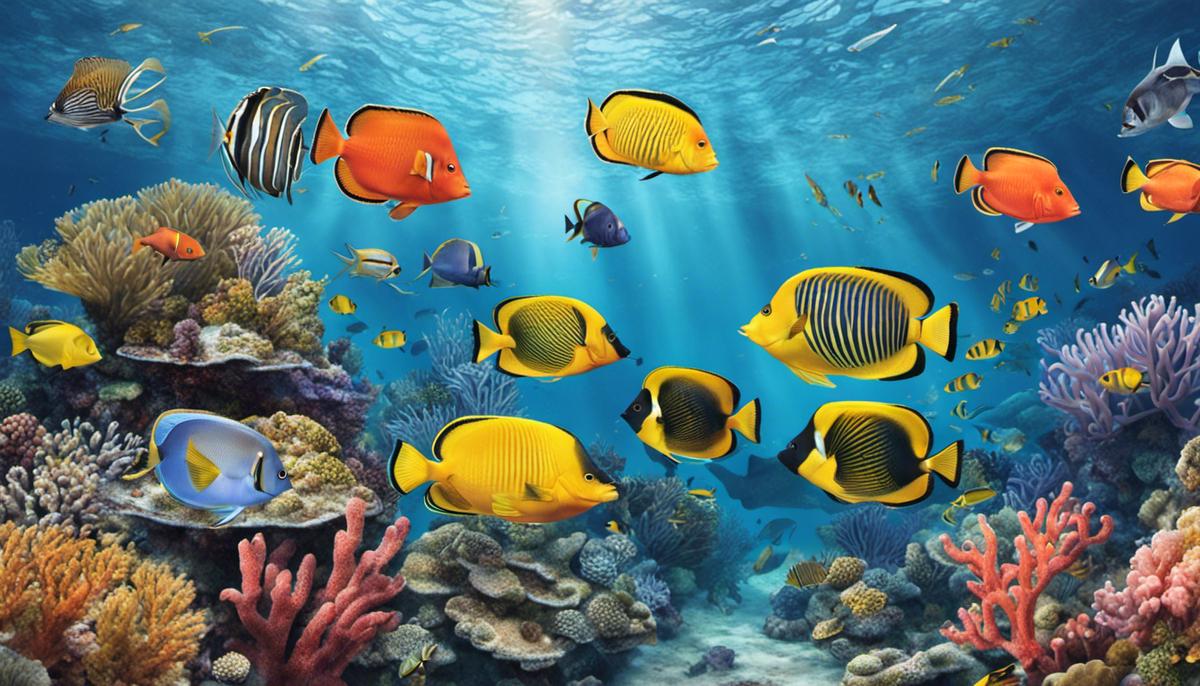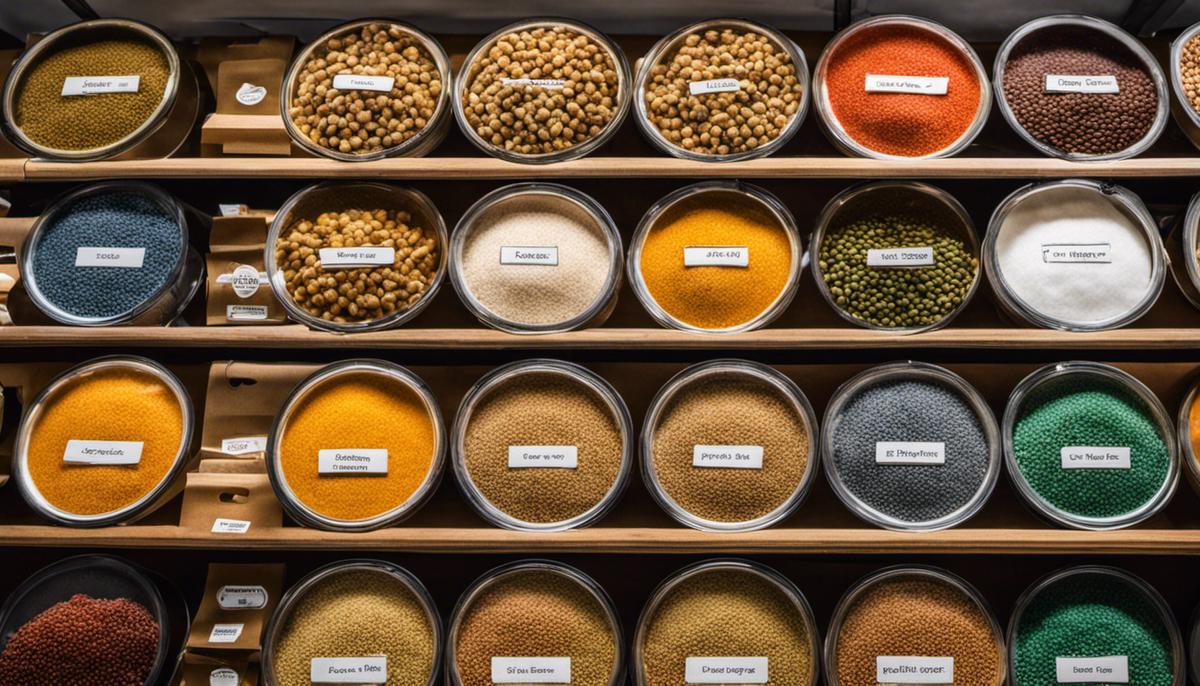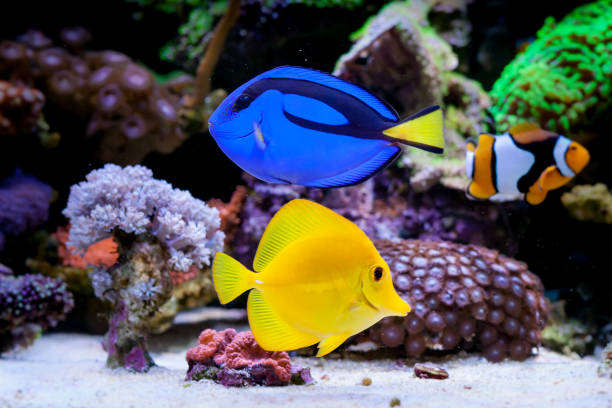Imagine the vibrant colors of your saltwater aquarium’s inhabitants, active and healthy, largely as a function of their diets. The beauty of keeping a saltwater aquarium extends far beyond the enchanting visual display, reaching into the realm of providing nutrition for these remarkable creatures. Ensuring the thriving health of your aquatic pets requires careful consideration of their diet. A fish’s diet significantly contributes to its overall well-being – dictating their color, energy level, longevity, and susceptibility to diseases. This information provides a comprehensive look into understanding the distinctive dietary requirements of your saltwater fish, choosing the right fish food, and learning effective feeding practices and techniques.
Understanding the Diet of Your Saltwater Fish
Understanding Your Saltwater Fish’s Diet
In order to maintain the health and longevity of your saltwater fish, take time to research their specific dietary preferences and needs. Not all species of fish have the same diet. Some are carnivorous, preferring live or frozen foods like shrimp or other invertebrates, while others are herbivores, eating mostly algae and other plant material. Still others have omnivorous diets which encompass both.
The choice of diet also needs to take into consideration the fish’s lifestyle. For instance, species such as pufferfish and lionfish prefer a largely carnivorous diet due to their predatory nature, whereas species such as tangs prefer a vegetable-based diet because they are predominantly algae grazers. Understanding these nutritional needs is key to properly feeding your saltwater fish.
Optimal Feeding Frequency
The frequency of feeding your fish plays a critical role in its overall health. Most saltwater fish should be fed once or twice daily. It’s important not to overfeed your fish as this can lead to health problems and affect the water quality in your aquarium. Smaller, more frequent meals are generally better than large meals.
Types of Food for Each Species
Saltwater fish thrive on a variety of food types, including live foods, frozen foods, pellet foods, and flake foods. Live foods, such as brine shrimp and daphnia, provide good nutrition and also induce natural hunting behaviors in predatory fish. Frozen foods can be just as nutritious, and often a good mixture of frozen foods can provide a balanced diet for most species.
Flake foods and pellet foods can be a good staple diet for many fish. Many flake or pellet foods are specially formulated to provide a balanced diet specifically for saltwater fish. However, it’s still important to supplement this diet with fresh or frozen foods to ensure they’re receiving all necessary nutrients.
How Diet Affects Health and Longevity
Diet can greatly affect the health and lifespan of your saltwater fish. A balanced diet can lead to increased immunity, healthier coloration, better growth, breeding performance, and overall vitality. In contrast, an insufficient diet can lead to decrease in energy, poor coloration, illness, or even a shortened lifespan.
In conclusion, understanding the specific needs and dietary preferences of your saltwater fish, and adjusting meals to accommodate them, goes a long way in ensuring their overall well-being.

Choosing the Right Fish Food
Choosing the Right Fish Food Type
Opting for the appropriate fish food plays a significant role in maintaining the health and vibrancy of your saltwater aquarium fish. There are mainly three categories of fish food that are typically available: live food, frozen food, and pellets.
Live food can be an excellent source of nutrition for your saltwater fish, providing the necessary vitamins and minerals. Live food mimics the same species they might hunt in their natural habitats, such as worms, shrimp, and plankton, which in turn aids in accentuating their hunting instincts.
If fresh live food isn’t readily accessible or if you want to ensure the food provided is parasite-free, you might consider frozen food. It retains much of the same nutritional value as live food and is generally free of parasites that could harm your fish. Frozen options can include mysis shrimp, krill, and bloodworms.
Finally, you have pellets, which can be an easy and cost-effective way to feed your fish. Pellets come in various sizes and formulas, catering to a wide range of marine species. Many brands specifically engineer their pellets to include all essential nutrients and vitamins, contributing to a well-rounded diet for your fish.
Finding the Appropriate Food for Your Fish
It’s crucial to note that not all fish will have the same nutritional needs or food preference. What works for one species might not be ideal for another. Therefore, understanding the specific dietary needs of your fish can help you make a more informed decision.
Predator fish, for example, tend to prefer live or frozen food, as they regularly eat other smaller fish or invertebrates in their natural habitat. On the other hand, herbivores would benefit from algae-based and plant-based pellets or flakes, supplemented with fresh vegetables like peas and lettuce.
Aquarium fish food is typically fortified with a blend of essential nutrients. Still, it’s crucial to go through the ingredients label to ensure it contains a mix of protein, carbohydrates, and fats, along with necessary minerals and vitamins. For a balanced diet, look out for food that contains a high-quality source of protein, essential fatty acids, and antioxidants.
Choosing the right fish food for your saltwater aquarium often involves a bit of trial and error. It’s essential to observe your fish after introducing a new food type into their diet. Look out for any changes in behavior, color, growth, and overall health. This observation will give you insights into whether the new diet agrees with your fish and whether you need to make further adjustments.

Feeding Practices and Techniques
Feeding Schedule
Establishing a feeding schedule for your saltwater aquarium fish is crucial. Most fish thrive on feeding once or twice a day. Some species, especially the smaller species, may require more frequent feedings, three or four times a day. The schedule should coincide with the fish’s active period, typically in the morning and in the late afternoon or early evening.
Portion Control
Overfeeding is a common mistake among aquarium owners. The amount of food given to the fish should be the amount they can consume within two to three minutes. Leftover food will increase the chemical buildup in the tank and may lead to health problems and water quality issues.
If your fish are constantly hungry and feeding does not satisfy them, you will need to slightly increase the amount of food. On the contrary, if food is left at the bottom of the aquarium, it means your fish have eaten enough and you should reduce the portion size.
Understanding Signs of Overfeeding and Underfeeding
It’s important to identify if your fish are being overfed or underfed. Symptoms of overfeeding include an excess of uneaten food at the bottom of the tank, cloudy or discolored water, and increased algae growth. Overfed fish may also exhibit difficulty swimming or a bloated appearance.
Underfeeding signs, on the other hand, include visible ribs or spinal column, sluggish activity, and loss of color. Underfed fish may also dart to the surface for air or food immediately after you feed them.
Handling Overfeeding and Underfeeding Situations
Overflowing tanks can be tackled by reducing the amount of food given and increasing the frequency of water changes to remove excess nutrients. It’s also essential to examine the food sink rate and the fish’s feeding habits. Some fish are fast eaters, while others are slow and methodical.
For underfed fish, try increasing the food amount gradually. It’s better to feed small amounts several times a day instead of one large feeding. Monitor the fish frequently to ensure they’re active and healthy. If they’re eating but continue to lose weight, this may indicate a health issue and you should consult an aquarium professional or veterinarian.
Nutritional Requirements
Remember, variety in the diet is essential for saltwater fish. This encourages normal behavior, boosts the immune system, and improves overall health and vitality. A well-balanced diet that includes a mix of flake food, frozen food, and live food along with occasional supplements can fulfill the nutritional demands of your saltwater fish. Always remember to familiarize yourself with the specific dietary requirements of each species in your aquarium as some may have unique feeding needs.

Adopting appropriate feeding habits for your saltwater aquarium fish is fundamental in maintaining their health and vibrancy. Understanding the specific dietary preferences, recognizing the variety of food choices, and implementing effective feeding practices are factors that propel successful fish keeping experience. In doing so, you preserve the wellness of your fish while enjoying the visual splendor they confer. We hope that this information cultivates an improved awareness and approach in nourishing your aquatic friends. With a keen understanding and thoughtful application of these insights, the life beneath the surface of your water world can thrive and continue to captivate imagination.
ChasingNemo.com is a participant in the Amazon Services LLC Some of the links in our posts are affiliate links. Click Here For Full Disclosure.







